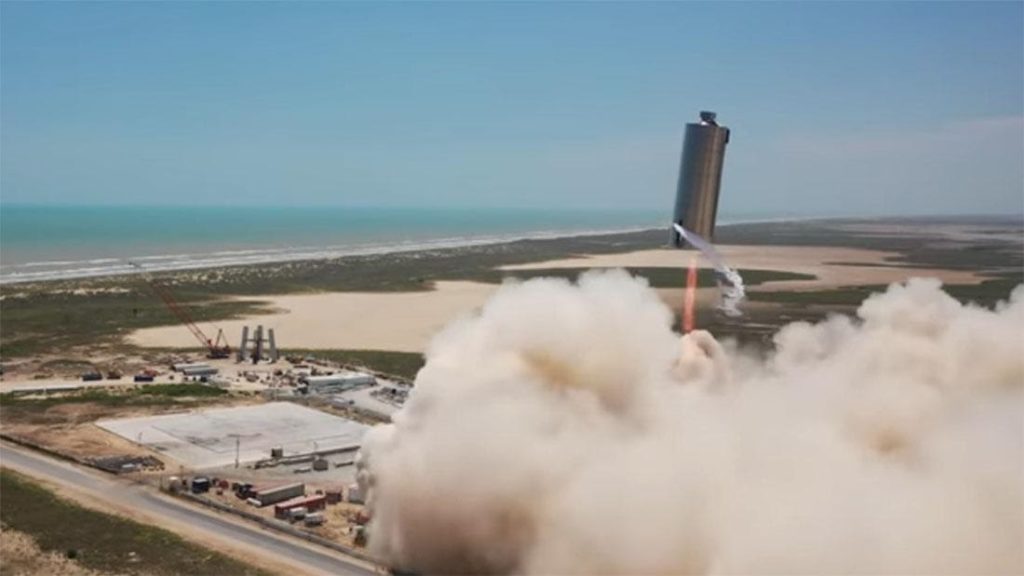
SCREENSHOT TAKEN BY ROXANNA MIRANDA FROM SPACEX WEBCAST TAKEN LAST THURSDAY
Alejandra Yañez | THE RIDER
SpaceX successfully launched and landed the uncrewed Starship prototype, SN6, on Thursday at the Boca Chica launch site. The rocket’s test flight is part of the company’s goal to travel to both Mars and the moon.
SN6 performed the same 150-meter hop just a day shy of a month after its elder counterpart SN5 made the first Starship prototype launch.
Much like SN5, the only hiccup during Thursday’s launch regarded a landing leg that appeared to give a slight lean after the dust and smoke cleared, according to the NASA Spaceflight website, nasaspaceflight.com.
As previously reported by The Rider, “The SN6 rocket is powered by a single Raptor engine (a reusable methalox full-flow staged-combustion rocket engine), according to the SpaceX website.”
The Raptor engine (SN29) is part of the stainless steel prototype design.
Elon Musk, the SpaceX CEO, plans to build Starship, a 165-foot-tall spacecraft with six of these rapidly reusable engines. The second part of the design is Super Heavy which will be powered by 31 Raptor engines to propel the rocket into space.
The company is developing Starship around the goal to carry as many as 100 people at a time and cargo on missions to the Moon and Mars, according to CNBC.com.
Musk’s goal is to make Starship fully reusable, according to the SpaceX website, in order to make space travel as common as the commercial airplane.
SN6 is currently under post-hop processing at the Boca Chica production facility.
Composite overwrapped pressure vessel (COPV) tests on SN5 indicate that the rocket will hop again, at least once, according to nasaspaceflight.com.
SpaceX has been simultaneously building multiple prototypes at the Boca Chica facility such as SN7 and SN8.
Additional Starships continue to evolve, along with preparations for the Super Heavy booster, according to nasaspaceflight.com. The website states, “According to Chief Designer Elon Musk [the Super Heavy booster] could conduct an initial test hop by October.”





